Bread and Your Body…
…Well, not your body, per se. While considering what medium I would choose, I had to keep in mind that there are things I’m good at under pressure, and things that I am not. I could write and perform a jingle, but I’d probably get stage fright. I could write a poem or a short story but how long would it take before I started feeling silly? I then had to consider what we’d learned this semester that actually stuck with me. And then I got it, I’m always good at baking bread, and proteins were some of the most accessible course materials to me. And given the importance of proteins in the baking process, it only made sense that the two would make the perfect project. In short, I am going to bake two different loaves. One loaf will have a low protein content, the other loaf will have a high protein content. The end result will demonstrate the objectives found in Unit 2, particularly those involving protein and recognizing the difference between those with higher protein content and those with lower protein content.
So what does flour protein have to do with the body? Well, proteins work in very similar ways to very different ends. Protein rich flours such as bread flour, such as the flour used in part of this project, or 00 Tipo flour provide structure, reinforcing the bonds made when liquids like water or milk are added. This will allow the dough to hold together, and yield a finished product that is firm and that retains its shape. A general rule of thumb is, the more protein, the stronger the dough [King Arthur Baking: Protein Percentage]. A lower protein flour like all purpose flour, like the other example, will yield a dough and a finished product that is tender and softer to the touch. These proteins, it must be noted, are different from those present in the human body, and those for which this project is about. “About 80% of protein content is represented by the gluten-forming protein, a complex mixture of gliadins and glutenins.” [Mercado, Mojica, Morales-Hernandez, 2022] Gluten was first isolated in 1745, though the production of bread in the annals of human history marks the beginning of civilization as we know it [Rej, Aziz, Sanders 2018]
Likewise, proteins are active in providing structure in the human body. One of the key ways in which it serves this function is by aiding in the repair of damaged tissues, and the building of new ones. Proteins are also responsible for transporting nutrients, providing a crucial service to the rest of the body. Were these proteins not present, the body would suffer, tissues would decay or not be built, and the body would become weak, malnourished, and suffer muscle loss. Hair and nails would become brittle. Effectively, the “structure” would be less stable, as with the bread I am baking.
Don’t get me wrong, there is rarely a such thing as bad bread. But the difference in finished product is so vastly variable dependent on a number of factors, not the least of which, protein content. This difference can be made analogous to that of the human body, which depends upon proteins for structure, support, and regeneration.
An analysis of both loaves shows that while they are both successful, tasty loaves of bread, we have two very different textures. The higher protein content produced a more stable loaf that had a larger rise and retained its shape well when cut or as pressure was applied (see the pinch tests). The lower protein loaf retained a dent after pinching, did not rise as high or as wide, and had an overall structure that was slightly gummier than the bread flour. Neither loaf is bad, but there is one that I would use for sandwiches and one I would not for these very reasons.
Finally, I would like to note that both breads were made from the exact same recipe of 450g flour, 10g Kosher salt, 9g Active Dry Yeast, and 375mL water. They were proofed for the exact same amount of time, and cooked for the exact same time at the same temperature. The only difference in these breads is the flour used.
Citations:
https://kingarthurbaking.com/blog/2023/09/25/protein-percentage
Pavel Prieto-Vázquez, d. M., Mojica, L., & Morales-Hernández, N. (2022). Protein ingredients in bread: Technological, textural and health implications. Foods, 11(16), 2399. doi:https://doi.org/10.3390/foods11162399
Rej A, Aziz I, Sanders DS. Breaking bread! Proc Nutr Soc. 2019 Feb;78(1):118-125. doi: 10.1017/S0029665118002549. Epub 2018 Oct 16. PMID: 30322423.
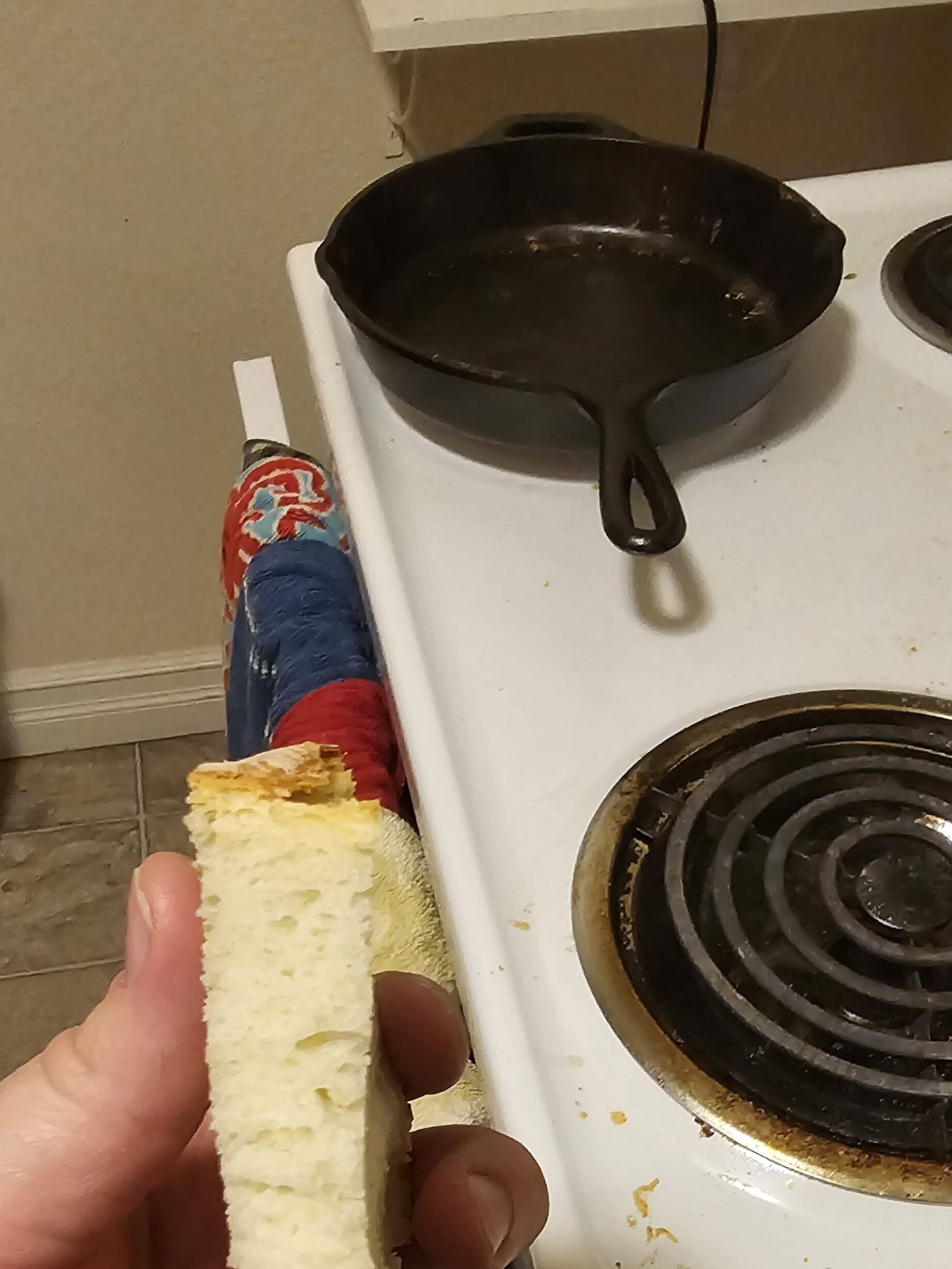
Crumb 10%
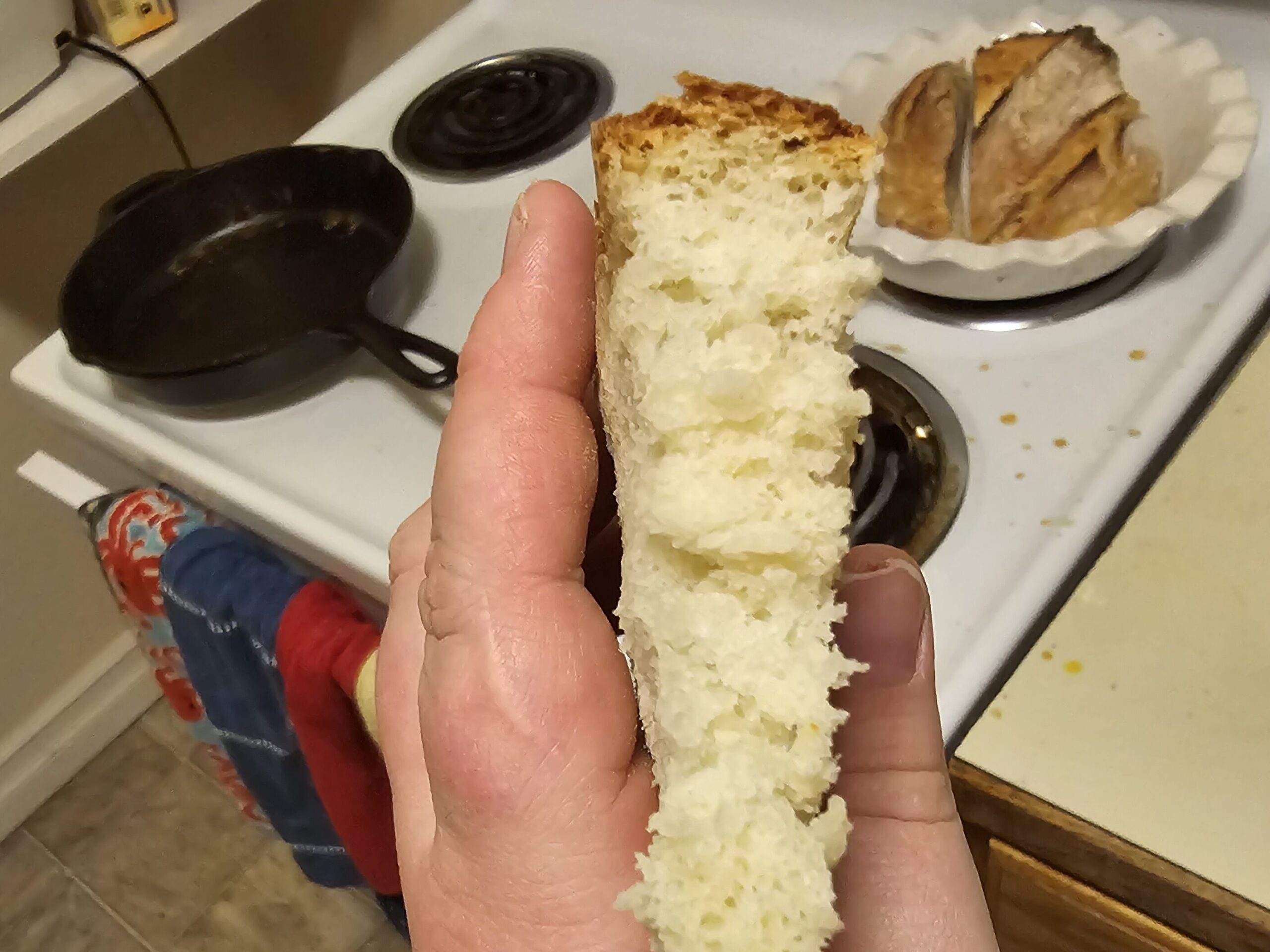
Crumb 13.5%
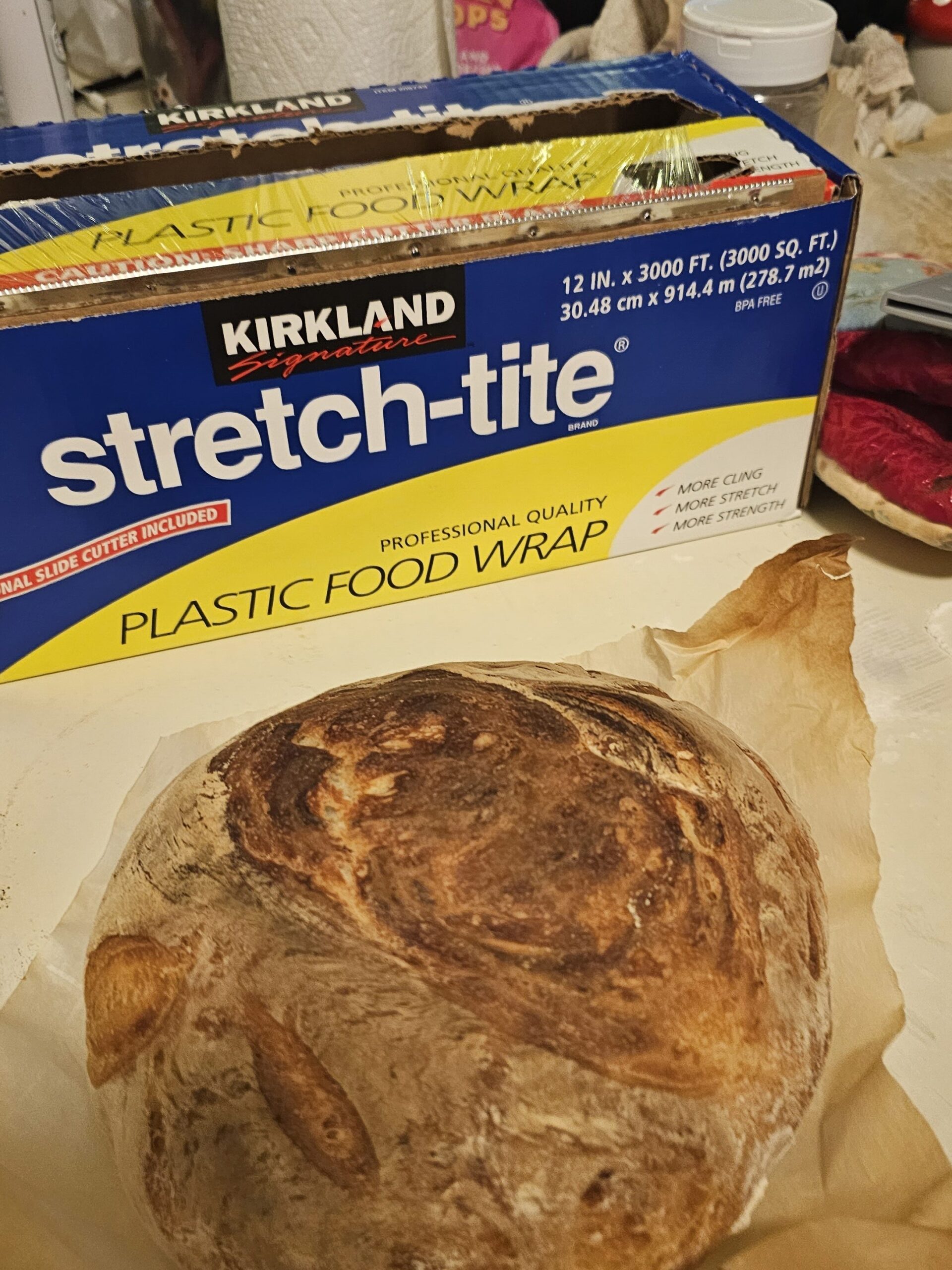
Whole 13.5%

Whole 10%
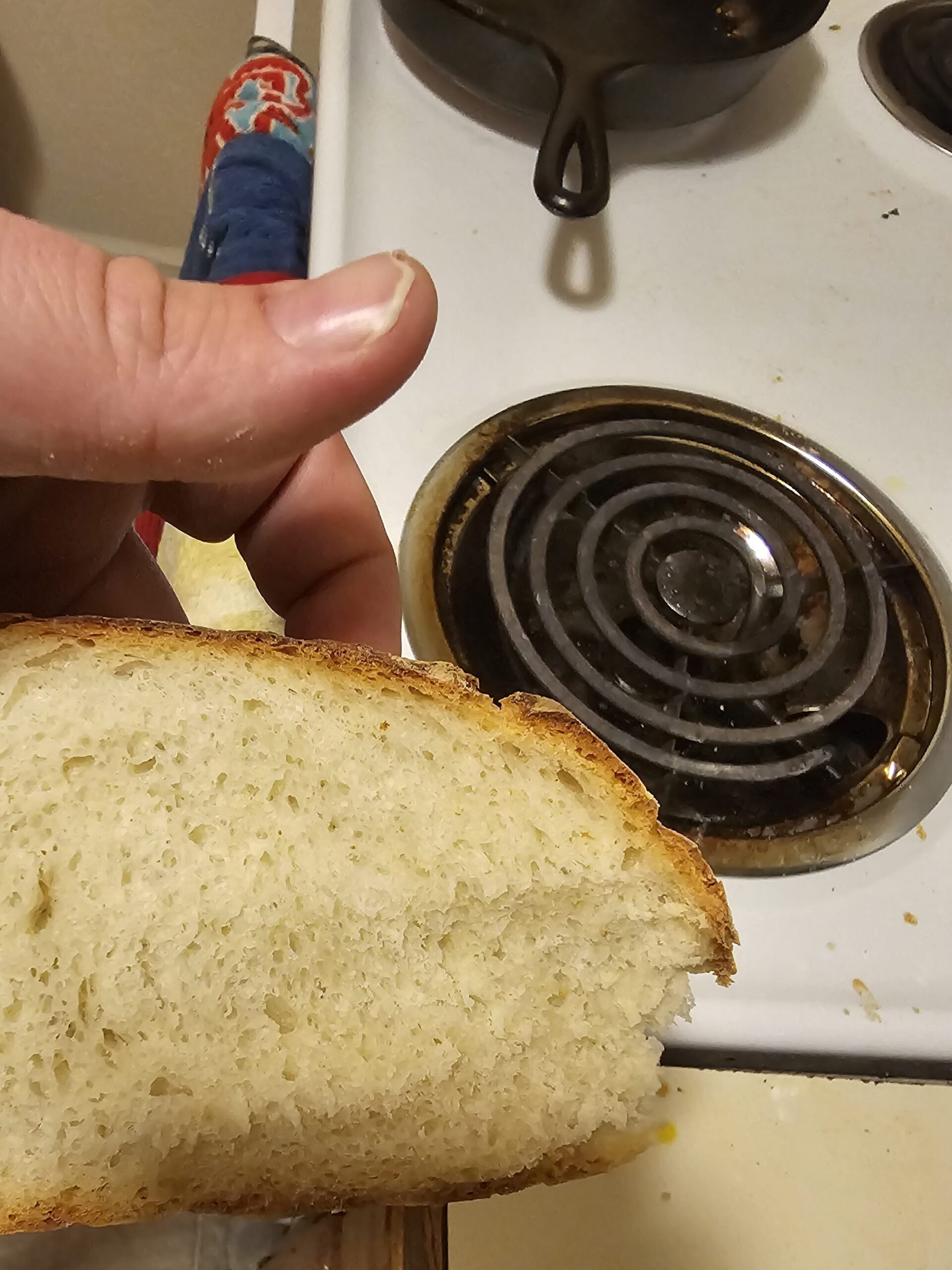
13.5% pinch test
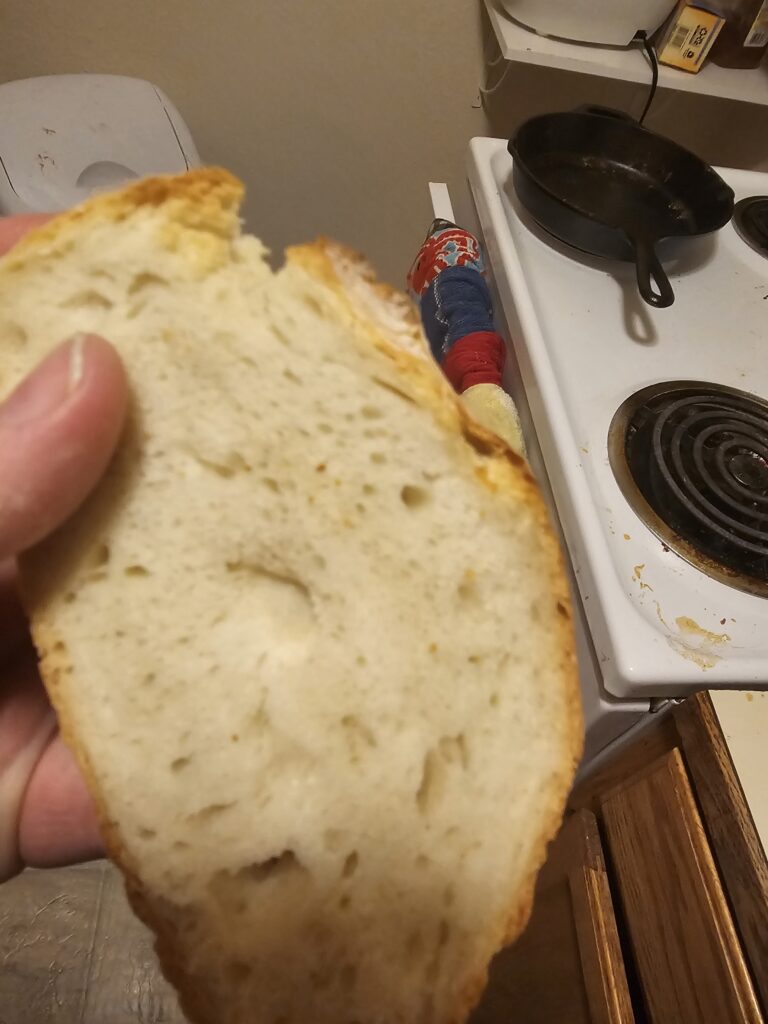
10% pinch test
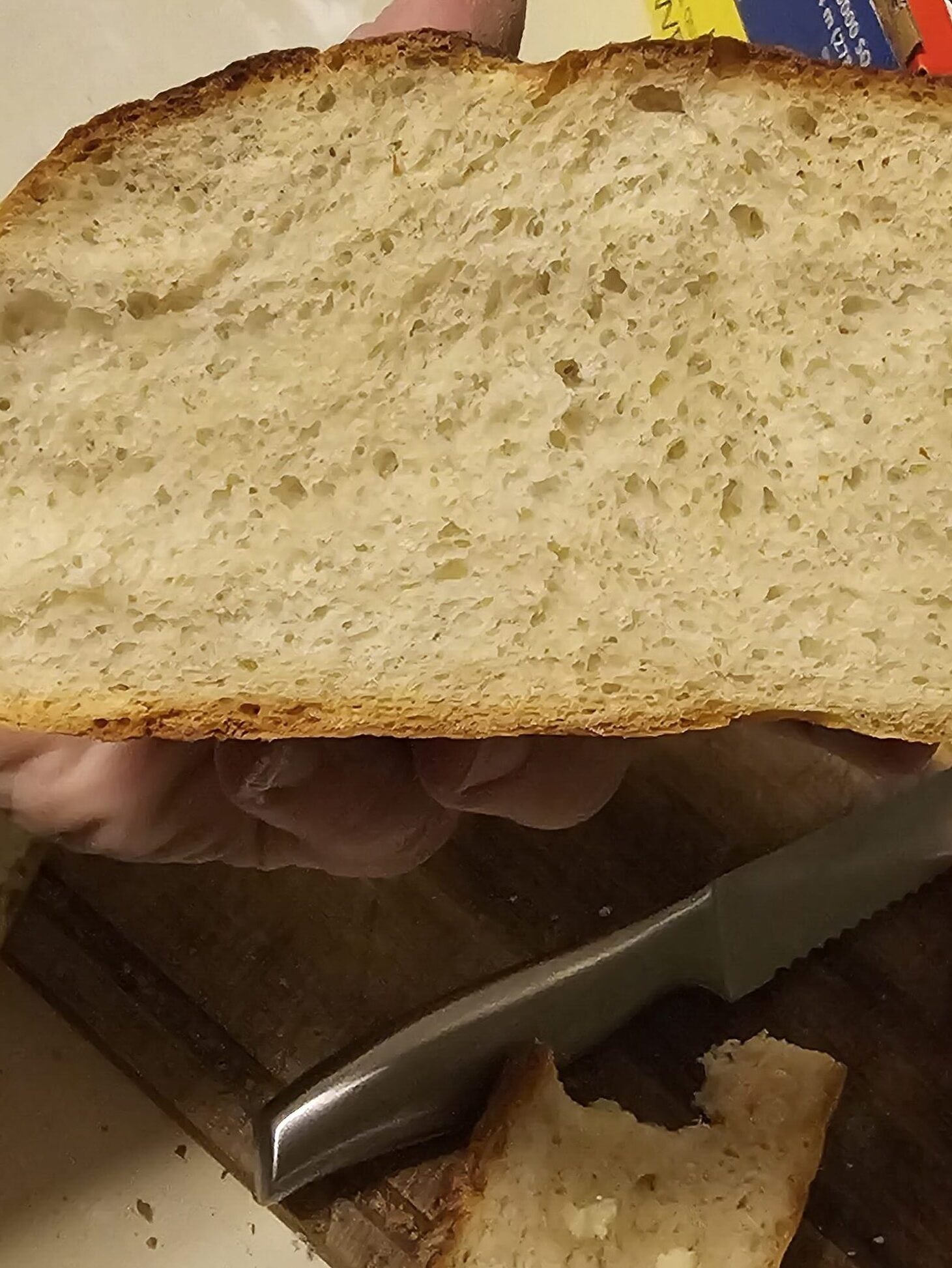
13.5 Cross-section
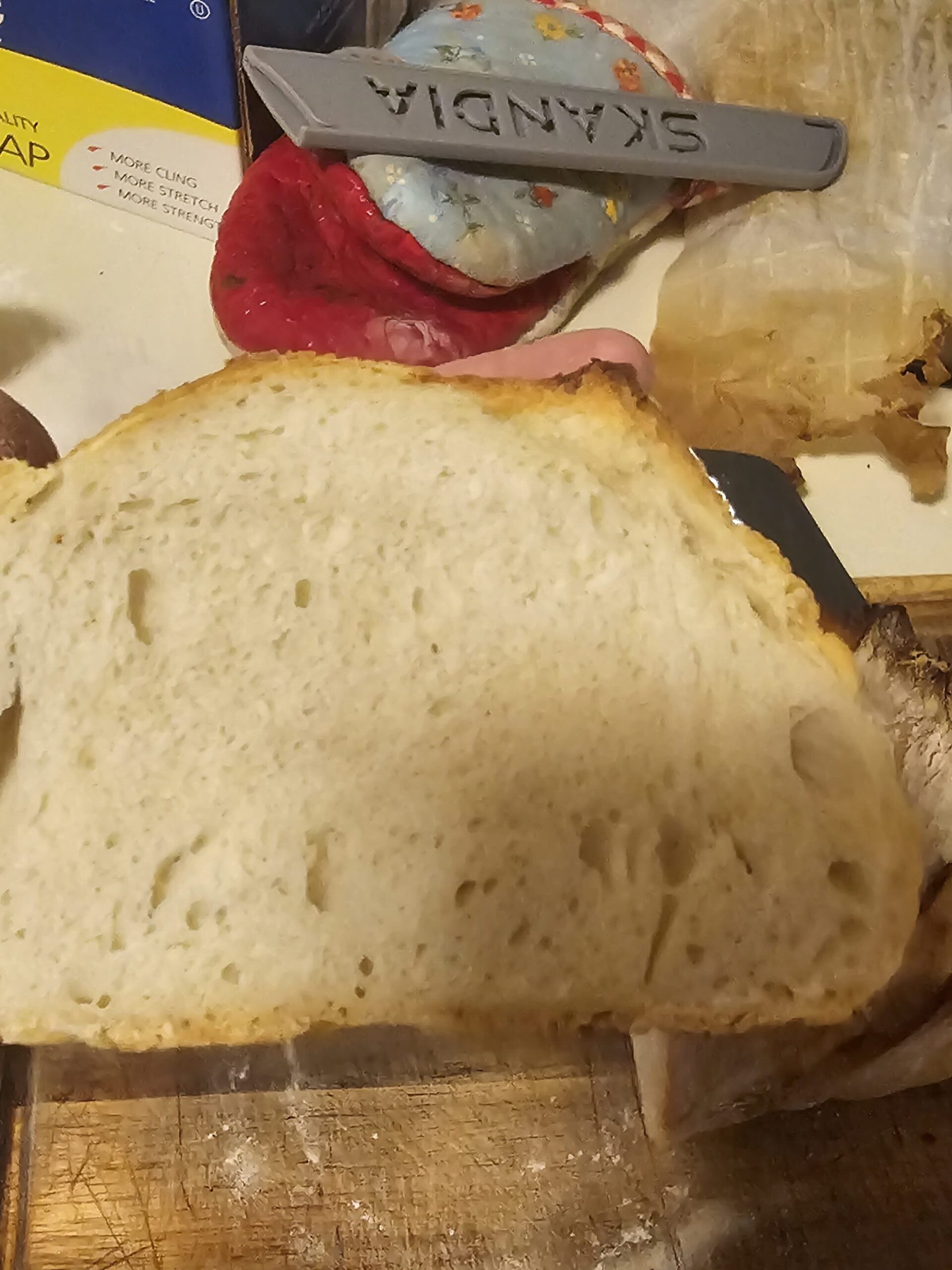
10% Cross Section

For Eli’s project he examines the relationship between flour protein content and the resulting texture of baked bread. He uses his baking skills and understanding of proteins as course materials for his medium. The goal is to bake two loaves, one featuring low protein content and the other with high protein content, to illustrate the concepts outlined in Unit 2, where we discussed and learned how to identify proteins.
Eli explains the role of proteins in bread-making, emphasizing how protein-rich flours like bread flour contribute to a firm and well-shaped dough, while lower protein flours yield a softer texture. Making connections to the human body Eli discusses the important role of proteins in providing structure, aiding in tissue repair, and facilitating nutrient transport. He connects the differences in bread texture to the body’s dependence on proteins for stability and support.
Through a detailed analysis of both loaves, Eli highlights how higher protein content results in a more stable and risen bread, while lower protein content leads to a softer and less voluminous loaf. Despite both being successful, Eli discerns specific use cases for each based on their textures. His piece ends by noting that both breads were made from the same recipe, showing that the only difference is the flour used.
Eli does a great job, creatively communicating the relationship between flour protein content and bread texture, abstractly connecting it to the broader context of protein’s role to the human body.